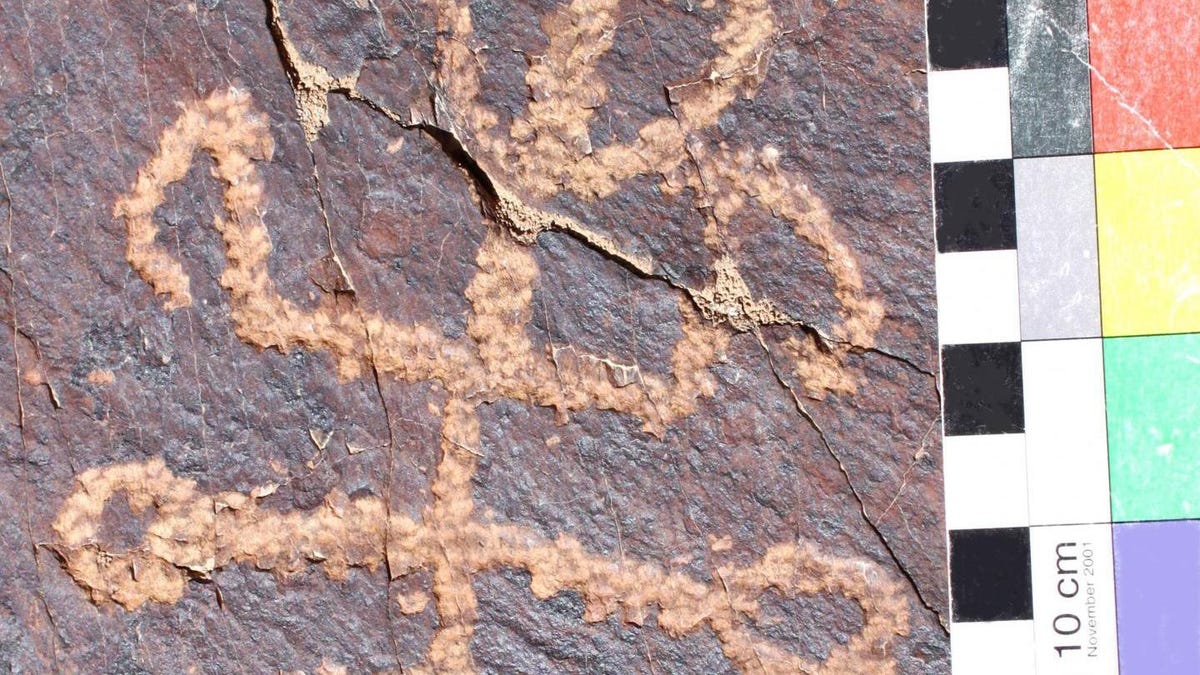Mysterious 'mantis man' drawing captures ancient fascination with bugs
The petroglyph has some curious characteristics that make it look part-man, part-mantis.

This petroglyph seems to have been inspired by a praying mantis, but also resembles some depictions of humans.
"Mantis man" may sound like a knockoff version of Marvel's Mantis superhero, but it's actually the nickname given to an unusual petroglyph discovered in central Iran.
The prehistoric rock art depicts a six-legged figure that appears to be inspired by praying mantis insects. Archaeologists and entomologists teamed up to analyze the petroglyph. Their study, which was published in the Journal of Orthoptera Research this month, suggests the figure may be a combination of a mantis and a man.
The carving is 5.5 inches (14 centimeters) long. The resemblance to the famous predatory insect is obvious. It has a triangular head and folded forearms. What caught the researchers' attention are the circular shapes on the rest of the arms.
"The closest parallel to this in archaeology is the 'Squatter Man,' a petroglyph figure found around the world depicting a person flanked by circles," said journal publisher PenSoft in a release on Monday. These humanoid images have been seen in ancient rock art from Spain to the American Southwest.
The scientists estimate the Iranian carving could be anywhere from 4,000 to 40,000 years old. Based on the depiction of the insect anatomy, the entomologists believe the mantis likely belonged to a local species called Empusa, also known as a conehead mantis.
The paper's authors acknowledge that "it is difficult to interpret prehistoric petroglyphs." We may never know for sure if the original artist intended to combine a mantis and a person, but the researchers suggest the figure could be tied to ancient religious or mystical beliefs.
"The petroglyph proves that praying mantids have been astounding and inspiring humans since prehistoric times," the paper said.

